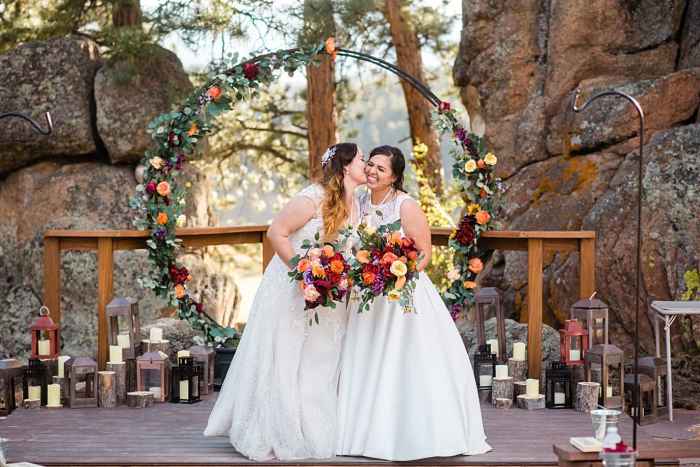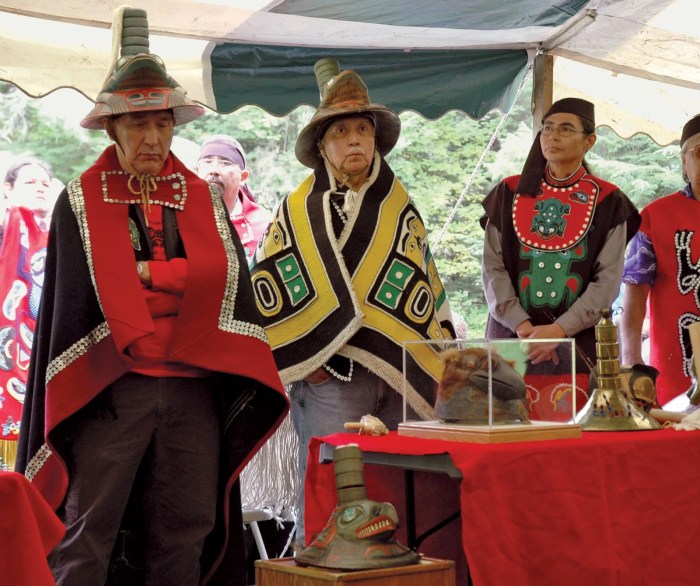Historical Evolution of Native American Wedding Attire
Native american traditional wedding dresses – Native American wedding attire exhibits a rich tapestry of diverse traditions, evolving over centuries influenced by both cultural practices and external factors. The materials, designs, and symbolism embedded within these garments offer invaluable insights into the history and beliefs of various tribes.
Evolution of Traditional Wedding Dresses Across Tribes
The evolution of Native American wedding attire is complex and varies significantly across different tribes and regions. While generalized timelines are difficult to establish due to the lack of extensive written records for many tribes, patterns emerge regarding material availability and evolving cultural practices. Early garments often utilized readily available natural resources, transitioning to incorporate traded goods and eventually modern materials.
Materials Used in Wedding Dresses Throughout History
The materials used in Native American wedding dresses reflect the available resources and the ingenuity of each tribe. Early dresses frequently incorporated plant fibers like hemp, yucca, and bark, along with animal hides and furs. Later, the introduction of European trade goods led to the incorporation of textiles like wool, cotton, and silk, often combined with traditional materials. Beadwork, quillwork, and embroidery using natural dyes became increasingly sophisticated.
Significance of Design Elements in Tribal Traditions
Specific design elements hold profound symbolic meaning within various tribal traditions. Beadwork, for instance, often conveyed narratives, family histories, or spiritual beliefs. Geometric patterns could represent clan affiliations or cosmological concepts. Feathers, shells, and other natural elements frequently incorporated into attire held spiritual significance, symbolizing connection to the natural world and ancestral spirits.
Timeline of Key Changes in Native American Wedding Attire
A precise timeline is challenging due to the diverse nature of Native American cultures. However, we can identify broad periods: Pre-contact era (before European arrival) utilized primarily natural materials and simple designs; Post-contact era saw the introduction of traded goods, leading to more complex designs and the incorporation of new materials; 20th and 21st centuries witnessed the blending of traditional elements with contemporary styles.
Tribal Wedding Attire: A Comparative Overview
| Tribe | Historical Period | Materials | Design Elements |
|---|---|---|---|
| Cherokee | Pre-contact to Present | Plant fibers, animal hides, later textiles, beads | Geometric patterns, embroidery, beadwork |
| Navajo | Pre-contact to Present | Woven textiles (wool, cotton), silver jewelry | Intricate weaving patterns, turquoise accents |
| Hopi | Pre-contact to Present | Cotton, wool, natural dyes | Kachina figures, geometric designs |
| Pueblo | Pre-contact to Present | Cotton, wool, feathers, shells | Elaborate embroidery, ceremonial headdresses |
| Lakota | Pre-contact to Present | Animal hides, beads, porcupine quills | Geometric designs, beadwork, quillwork |
Regional Variations in Traditional Dresses
Native American wedding attire exhibits significant regional diversity, reflecting the unique cultural practices and available resources of each area. These variations extend beyond mere aesthetics; they embody deeply ingrained spiritual beliefs and social structures.
Unique Characteristics of Wedding Dresses from Distinct Regions
The Southwest, for example, showcases dresses often featuring intricate weaving techniques and the use of natural dyes, reflecting the region’s arid environment and emphasis on craftsmanship. The Plains tribes often incorporated elaborate beadwork and quillwork, representing their nomadic lifestyle and rich artistic traditions. The Northwest Coast tribes, known for their woodworking skills, created ceremonial robes adorned with intricate carvings and symbolic designs.
The Southeast displayed a greater use of natural plant fibers and distinctive embroidery styles. The Northeast featured a mix of influences due to its history and varied tribes.
Cultural Significance of Colors and Patterns, Native american traditional wedding dresses
Color and pattern choices hold profound cultural significance. For instance, specific colors might represent spiritual forces, clan affiliations, or natural elements. Geometric patterns often symbolize cosmological beliefs or clan totems. The use of specific dyes, often derived from natural sources, further enhanced the symbolic value of the garments.
Methods of Construction and Embellishment
Construction techniques vary widely across regions. Some tribes specialized in intricate weaving, while others excelled in beadwork or quillwork. The embellishments, whether through embroidery, appliqué, or the incorporation of shells, feathers, or other natural elements, reflected the unique artistic skills and cultural values of each region.
Symbolism Embedded Within Dress Designs
The designs themselves often conveyed complex narratives or spiritual beliefs. Specific motifs, whether geometric patterns or representations of animals or deities, held symbolic weight within the context of the tribe’s cultural framework. These visual representations served as a powerful means of communicating cultural identity and beliefs.
Visual Representation of Regional Variations
Imagine a visual display showcasing five distinct regional styles: A Southwest dress, characterized by its woven fabric and earth-toned hues; a Plains dress, adorned with vibrant beadwork and quillwork; a Northwest Coast robe, featuring intricately carved wooden elements; a Southeast dress, showcasing detailed embroidery and natural plant fibers; and a Northeast dress, reflecting a blend of various tribal influences.
Symbolic Meaning and Significance of Garments and Accessories: Native American Traditional Wedding Dresses
Beyond their aesthetic appeal, garments and accessories worn during Native American wedding ceremonies carry profound symbolic weight, reflecting spiritual beliefs, social status, and marital roles.
Symbolic Meaning of Garments and Accessories
- Shawls: Often symbolize protection, warmth, and the nurturing aspect of the female role.
- Jewelry: Can represent status, wealth, or spiritual power. Specific materials, such as turquoise or shells, hold particular significance.
- Headdresses: Often worn by men, headdresses can denote leadership, spiritual authority, or connection to ancestral spirits.
- Belts: Can symbolize strength, unity, or the binding of two individuals in marriage.
- Moccasins: Represent connection to the earth and the journey of life.
Role of Materials in Conveying Cultural Identity
The materials used in garments and accessories play a crucial role in conveying cultural identity. Feathers, for example, might represent freedom, spirituality, or connection to the spirit world. Shells can symbolize the ocean, abundance, or the power of the sea. Beads, often made of glass, bone, or stone, are frequently used to create intricate patterns that tell stories or represent clan affiliations.
Garments and Accessories Reflecting Spiritual Beliefs
Many garments and accessories reflect spiritual beliefs and traditions. Certain colors, patterns, or symbols might represent specific deities, spirits, or cosmological concepts. The attire worn during ceremonies often serves as a visual manifestation of the couple’s connection to their spiritual heritage.
Accessories Symbolizing Status or Marital Roles
Specific accessories can symbolize status or marital roles. For example, elaborate jewelry might denote wealth or high social standing, while certain types of headdresses could signify leadership within the community. Changes in attire after marriage could reflect the shift in social status and roles.
Modern Interpretations of Traditional Wedding Dresses

Source: jenniecrate.com
Contemporary Native American designers are skillfully blending traditional elements with modern aesthetics, creating wedding attire that honors cultural heritage while appealing to contemporary tastes. This process involves navigating the delicate balance between preservation and adaptation.
Incorporation of Traditional Elements into Modern Attire
Modern designers often incorporate traditional patterns, motifs, and materials into contemporary designs. This might involve using traditional weaving techniques, incorporating beadwork or embroidery, or selecting fabrics with colors and patterns inspired by tribal traditions. They may also utilize traditional silhouettes while adapting them to modern sensibilities.
Challenges and Opportunities in Preserving Cultural Heritage
Preserving cultural heritage while adapting designs for contemporary weddings presents both challenges and opportunities. The challenge lies in ensuring authenticity and avoiding cultural appropriation. The opportunity lies in creating designs that are both aesthetically pleasing and culturally meaningful, allowing for the continuation of tribal traditions.
Comparison of Traditional and Modern Interpretations
While modern interpretations often retain the spirit and symbolism of traditional designs, they might differ in terms of materials, construction techniques, and overall silhouette. Modern dresses might incorporate more contemporary fabrics or silhouettes while retaining traditional patterns or embellishments.
Examples of Modern Designs Blending Traditional and Contemporary Styles

Source: britannica.com
Imagine a modern wedding dress incorporating a traditional Navajo weaving pattern into the fabric, or a dress featuring intricate beadwork inspired by Plains designs, but with a contemporary A-line silhouette. These designs demonstrate the successful integration of tradition and modernity.
Commonly Adapted Design Elements in Modern Interpretations
- Geometric patterns: Often representing clan affiliations or cosmological concepts.
- Beadwork: A versatile technique used to create intricate designs and convey narratives.
- Embroidery: Adds intricate detail and can incorporate traditional motifs.
- Natural dyes: Reflect a connection to the natural world and traditional practices.
- Traditional fabrics: Such as wool, cotton, or silk, often combined with contemporary materials.
The Role of Wedding Attire in Ceremony and Celebration
Traditional wedding attire plays a central role in Native American wedding ceremonies, extending beyond mere adornment to symbolize cultural identity, spiritual beliefs, and the union of two individuals.
Significance of Attire in the Wedding Ceremony
The attire worn during a Native American wedding ceremony is not merely decorative; it represents the couple’s connection to their heritage, their spiritual beliefs, and their commitment to their community. The garments and accessories often hold deep symbolic meaning, reflecting the significance of the occasion.
Process of Creating and Preparing Wedding Attire
The creation and preparation of wedding attire can be a lengthy and significant process. Often, family members or skilled artisans within the community participate in the creation of the garments and accessories. This collaborative effort reinforces the importance of community and tradition.
Social and Cultural Implications of Wearing Traditional Attire
Wearing traditional attire signifies pride in one’s cultural heritage and a commitment to preserving ancestral traditions. It also demonstrates respect for elders and the community. Choosing not to wear traditional attire might be a personal decision, but it can carry social implications within certain communities.
Specific Roles of Garments and Accessories Within the Ceremony
Different garments and accessories play specific roles within the ceremony. For instance, a shawl might be gifted to the bride, symbolizing protection and blessings. Jewelry might be exchanged as tokens of commitment. The attire itself often serves as a visual reminder of the couple’s connection to their spiritual and cultural heritage.
Native American traditional wedding dresses vary widely depending on the tribe, often incorporating intricate beadwork and symbolic designs. The formality of the attire can range significantly, influencing choices for the mother of the groom; for a winter wedding, finding a dress that complements the overall aesthetic is key, and a good starting point for inspiration might be browsing options like those available at mother of the groom dress for winter wedding websites.
This helps ensure the mother-of-the-groom’s outfit harmonizes with the unique beauty of the Native American wedding traditions.
Step-by-Step Description of a Hypothetical Traditional Wedding Ceremony
A hypothetical ceremony might begin with the bride and groom dressed in traditional attire, representing their heritage. During the ceremony, specific garments or accessories might be exchanged, symbolizing the union and the transition into a new stage of life. Following the ceremony, a celebratory feast would likely take place, with the attire continuing to play a role in the overall festivities.
Expert Answers
What role do colors play in Native American wedding dresses?
Color symbolism varies greatly by tribe and region, but often reflects spiritual beliefs, natural elements, or clan affiliations. Specific colors might represent fertility, prosperity, or connection to the earth.
Are there specific ceremonies or rituals involving the wedding dress?
Yes, many tribes have unique ceremonies surrounding the creation and wearing of the wedding dress. These might involve family members, spiritual leaders, and specific rituals designed to bless the couple and ensure a prosperous marriage.
How are modern interpretations of traditional dresses created?
Contemporary designers often collaborate with tribal elders and artisans to ensure respectful and authentic adaptations. They strive to blend traditional elements with modern aesthetics, creating designs that honor heritage while appealing to contemporary tastes.
Where can I find authentic Native American wedding dresses or inspired designs?
Some Native American artisans sell their work directly, while others may partner with boutiques or online retailers. It’s crucial to support authentic creators and be mindful of cultural sensitivity when purchasing or viewing these garments.
